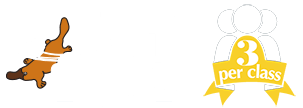Free Baby Home Development Program
At Shapland Swim Schools we pride ourselves on ensuring swimming is accessible to everyone, and that we support our community in learning about safe water practices. As a result, we have developed a program that helps new parents understand what to do with their newborn babies to prepare them for water and later swim classes.
The object of this program is to help parents:
- Make bath time fun
- Maintain baby’s ability to float on top of or in the water
- Develop the baby’s breath control
- Prepare babies for swim classes
To download your FREE Home Baby Program program fill in the details below.
FREE Home Baby Program
Download your FREE Home Baby Program
What our customers say about us
We have had a lovely friendly experience here. Our child’s swimming and confidence has grown with each lesson and we are very happy with the service, the teachers and the owners of the business. Highly recommend this swim school
My 11 year old son had to have his swimming and floating ability evaluated to join Nippers. Chris saw us at 6.30 am, before his regular classes, and conducted this assessment. He was helpful, supportive and patient with my son and offered him practical advice for swimming in the ocean.
My kids love having their lessons at Shapland! The teachers are great and even my anxious child really settled and thrives there.
An amazing swim school. Nothing but great experiences. My kids have become so confident and safe in the water. One even won a few ribbons at his first swim carnival recently. Highly recommended.

Ready for your child to learn to swim?
Enroll in our baby swimming lessons at Shapland Swim Schools and give your child the best start in their swimming journey.
Check out our center location in Brisbane, Queensland.
